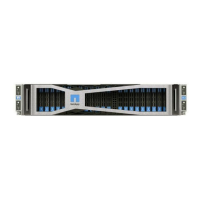7. Select Delete.
Remove Rancher on NetApp HCI using the REST API
You can use the NetApp Hybrid Cloud Control REST API to remove the three virtual machines that were set up
during deployment to host the Rancher server.
Steps
1.
Enter the management node IP address followed by /k8sdeployer/api/:
https://[IP address]/k8sdeployer/api/
2. Click Authorize or any lock icon and enter cluster admin credentials for permissions to use APIs.
a. Enter the cluster user name and password.
b. Select Request body from the type drop-down list if the value is not already selected.
c.
Enter the client ID as mnode-client if the value is not already populated.
d. Do not enter a value for the client secret.
e. Click Authorize to begin a session.
f. Close the window.
3. Close the Available authorizations dialog box.
4. Click POST/destroy.
5. Click Try it out.
6.
In the request body text box, enter the Rancher server FQDN as the serverURL value.
7. Click Execute.
After several minutes, the Rancher server virtual machines should no longer be visible in the Hosts and
Clusters list in vSphere Client. After removal, you can use NetApp Hybrid Cloud Control to redeploy
Rancher on NetApp HCI.
Find more Information
• Rancher deployment troubleshooting
• NetApp Element Plug-in for vCenter Server
• NetApp HCI Resources Page

